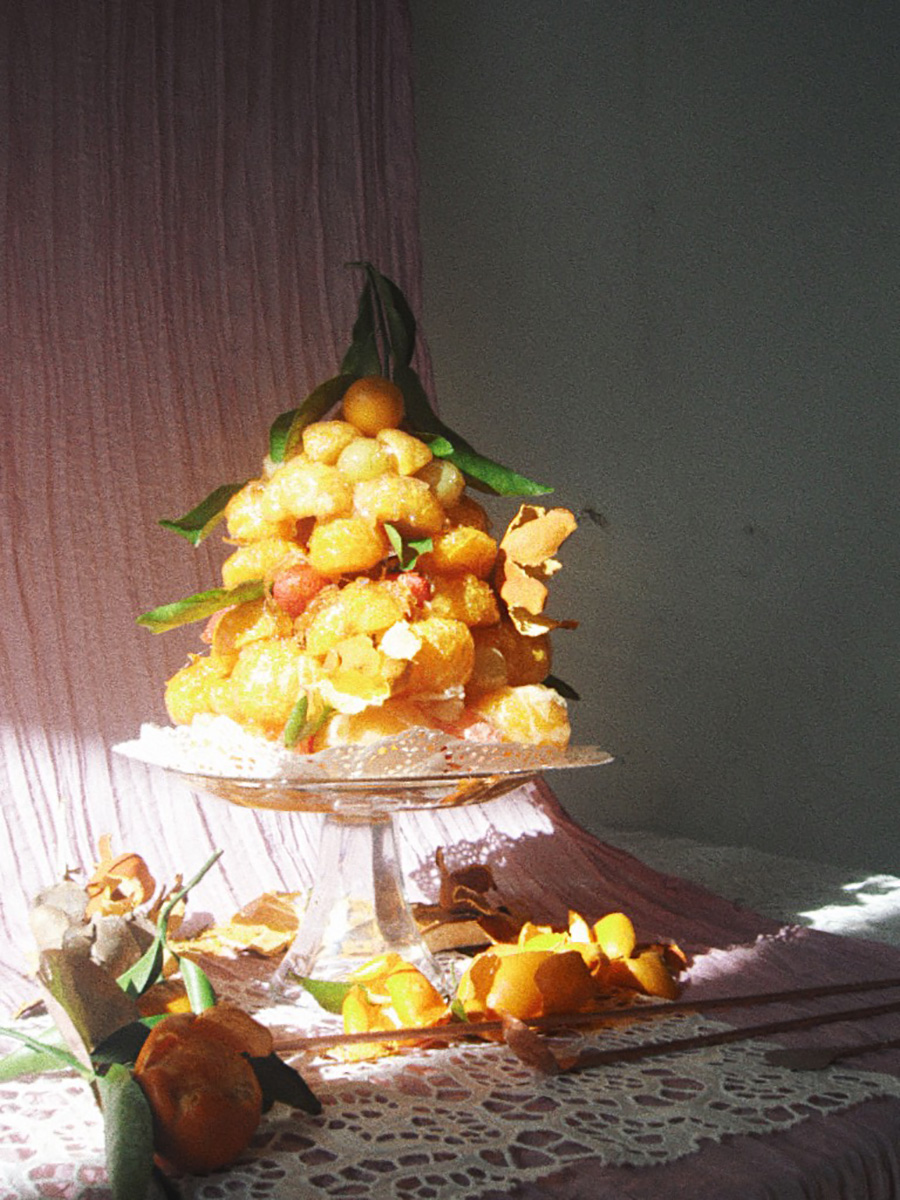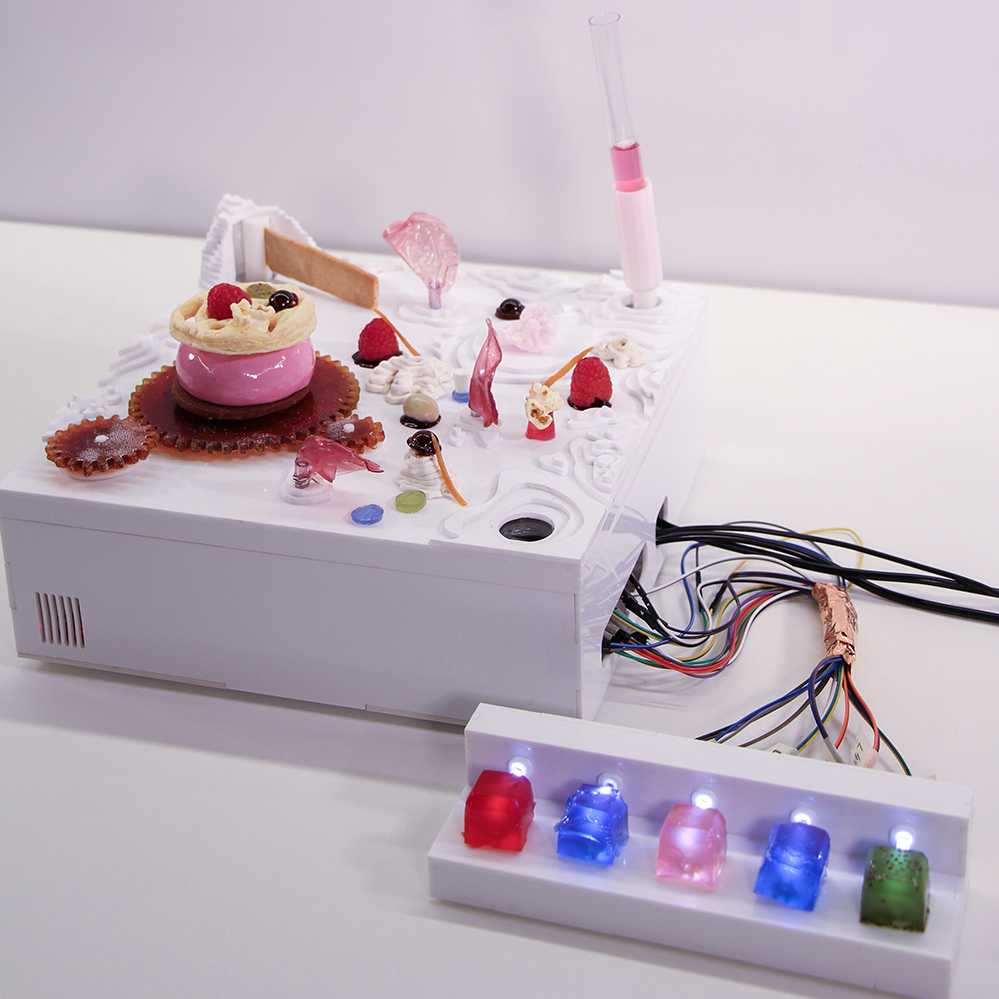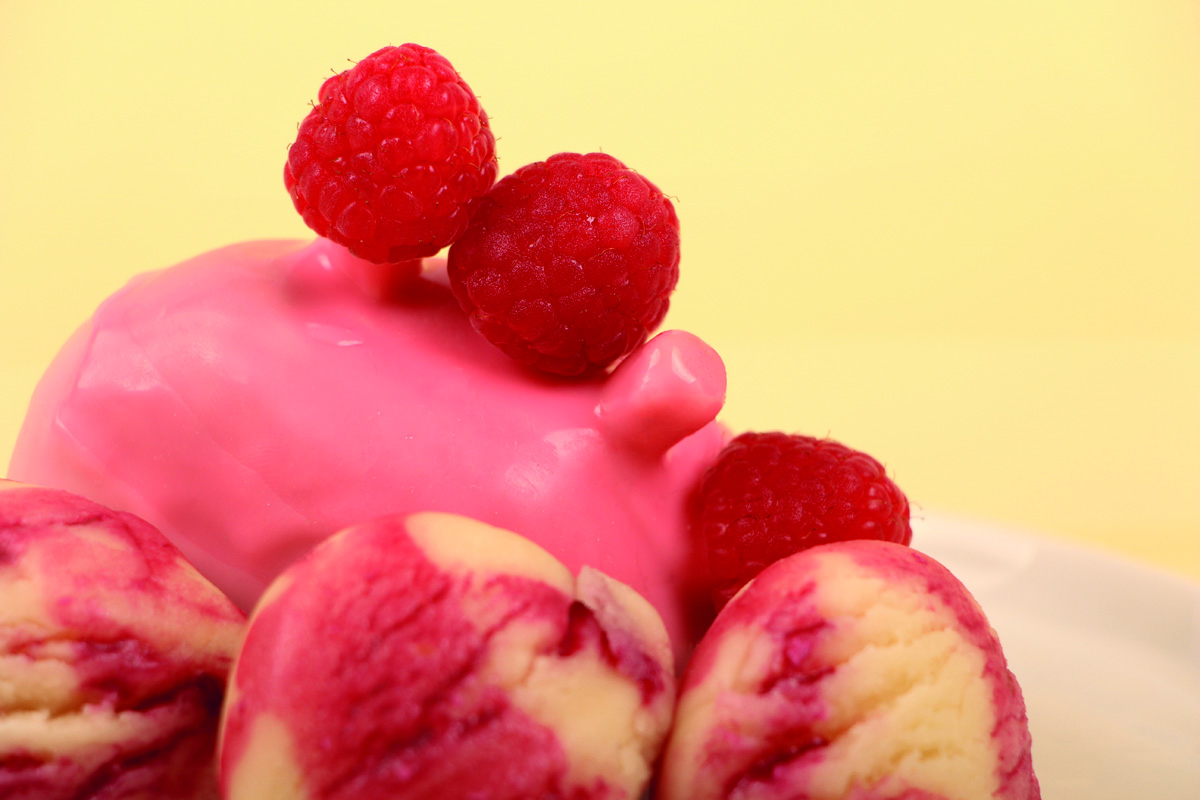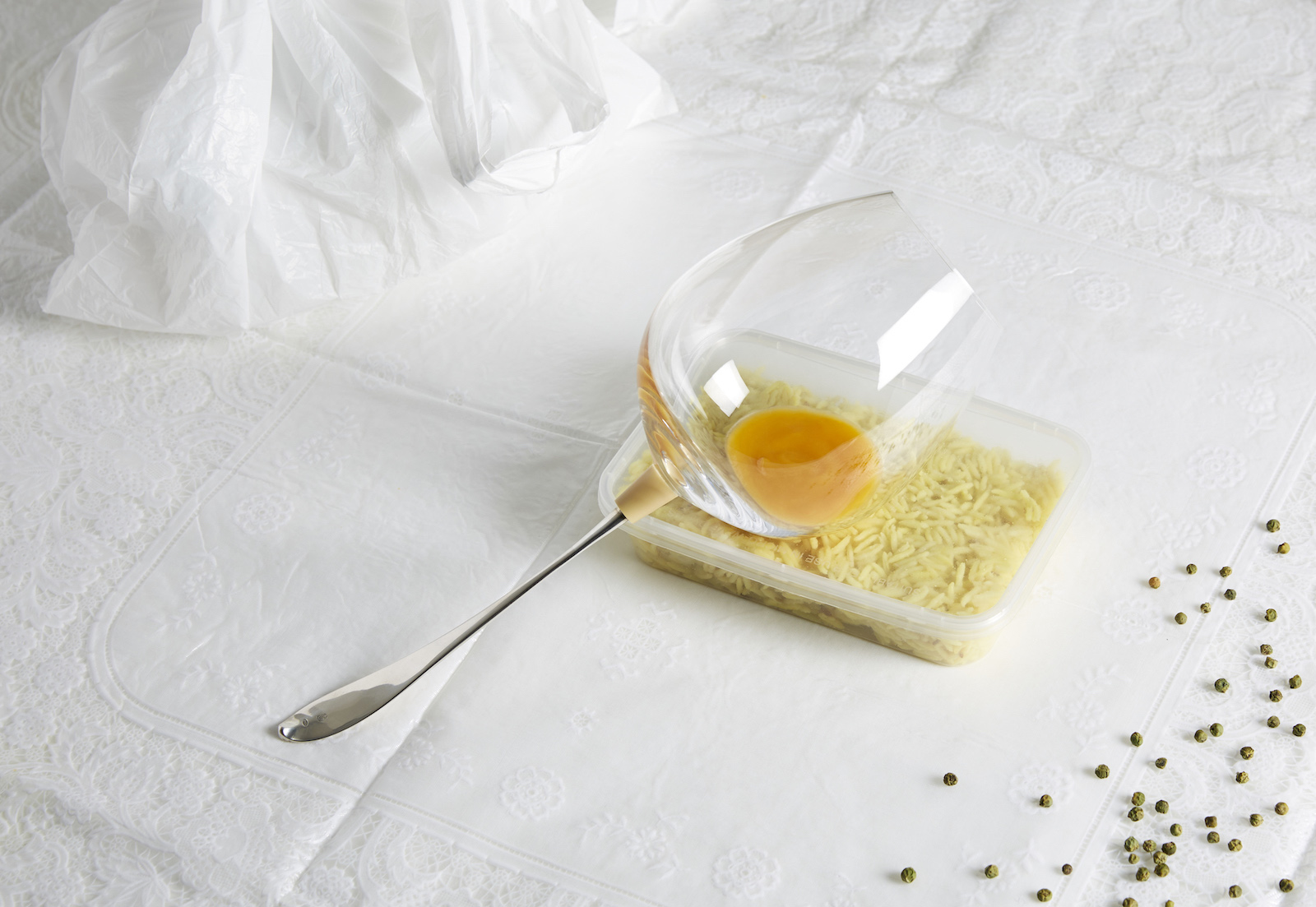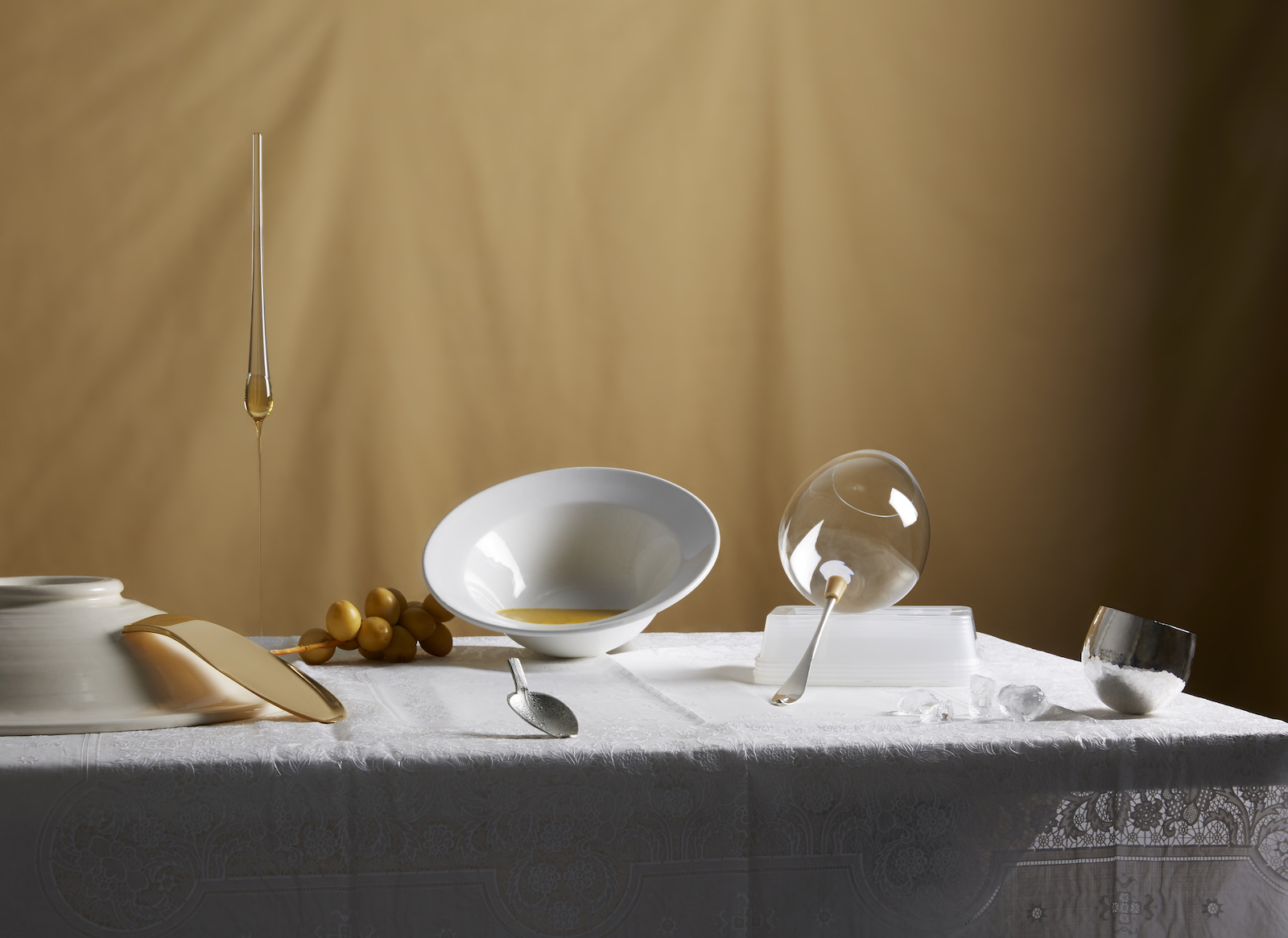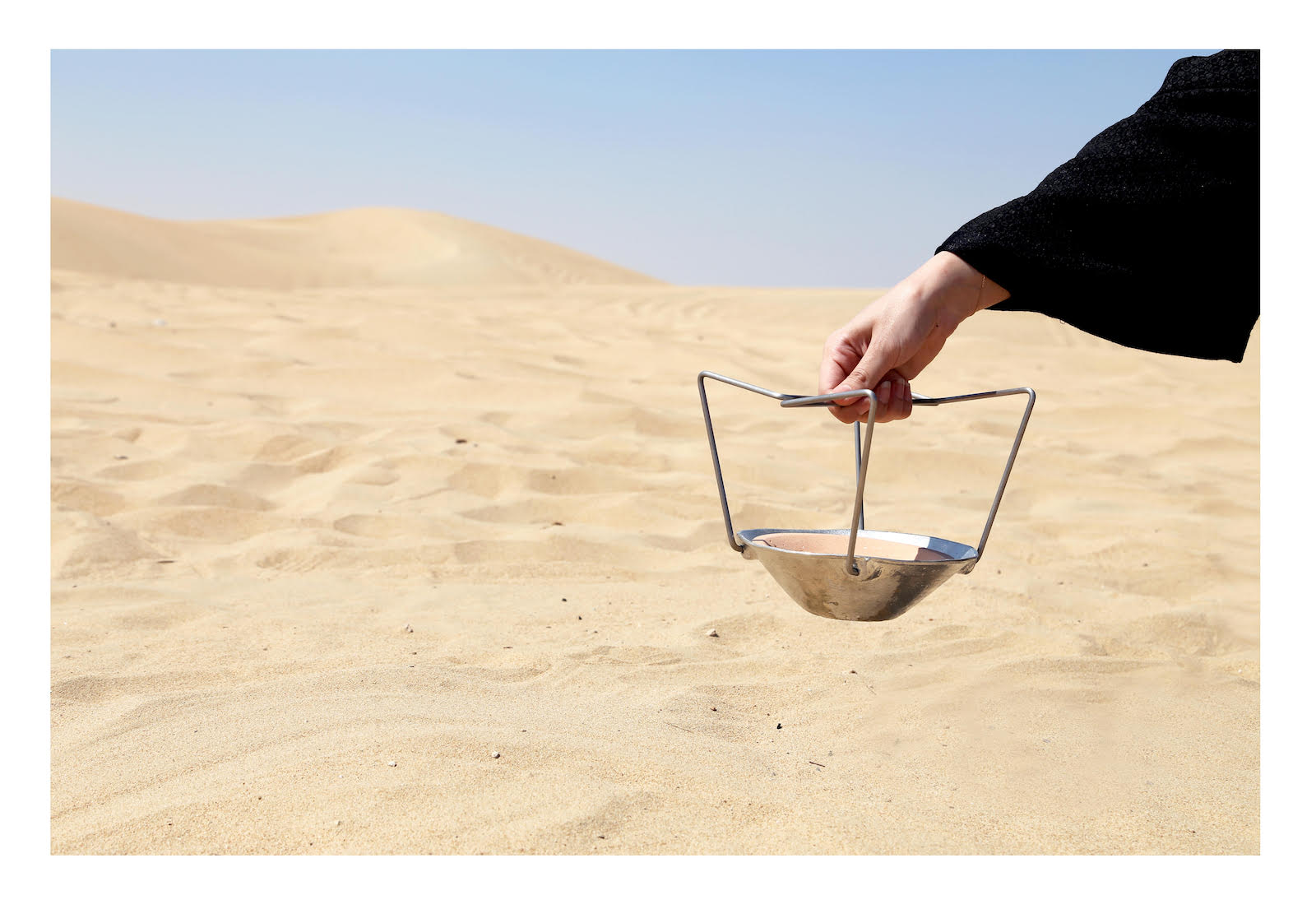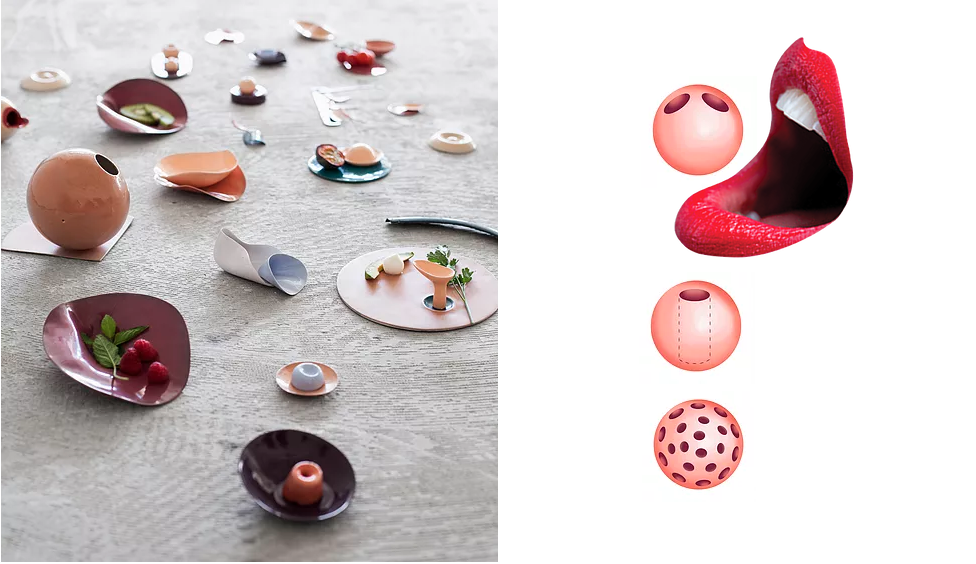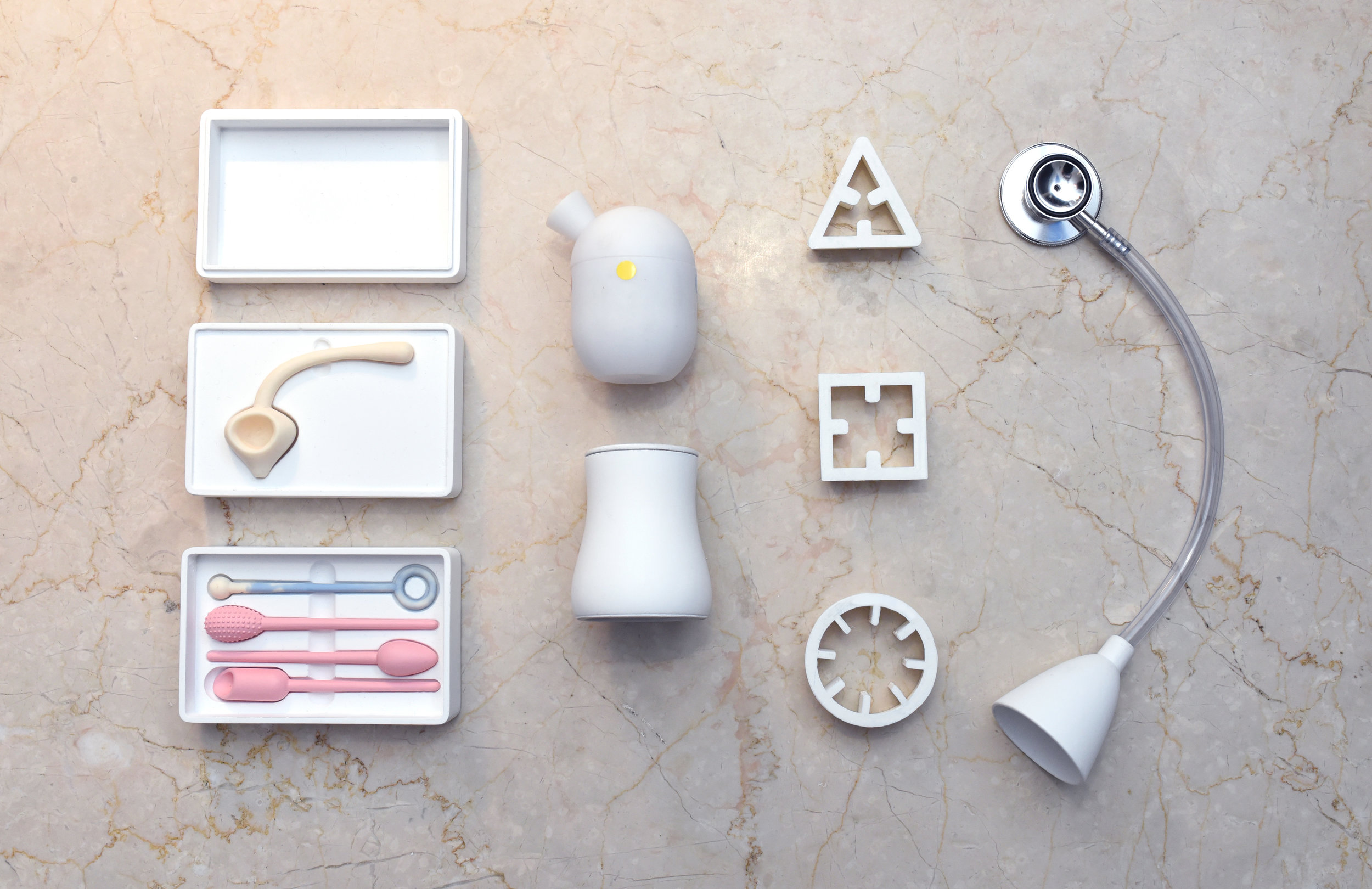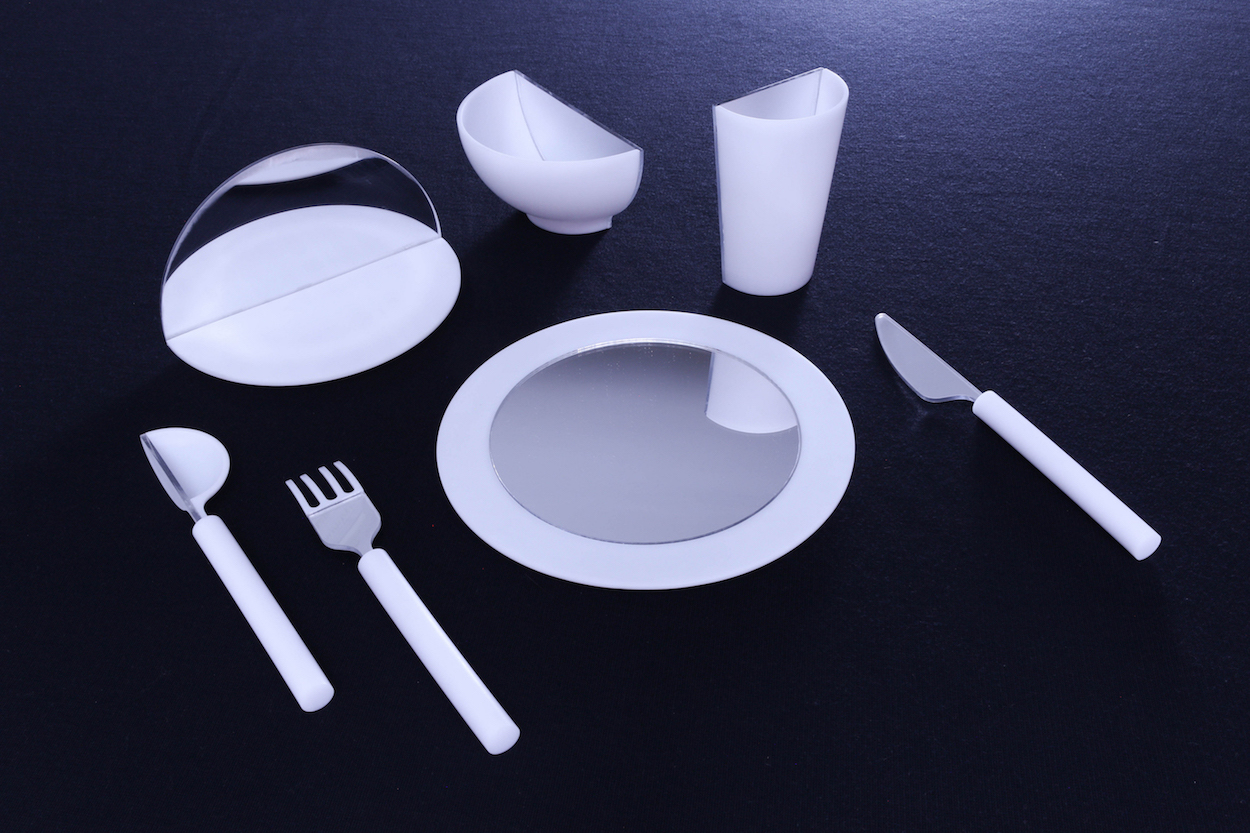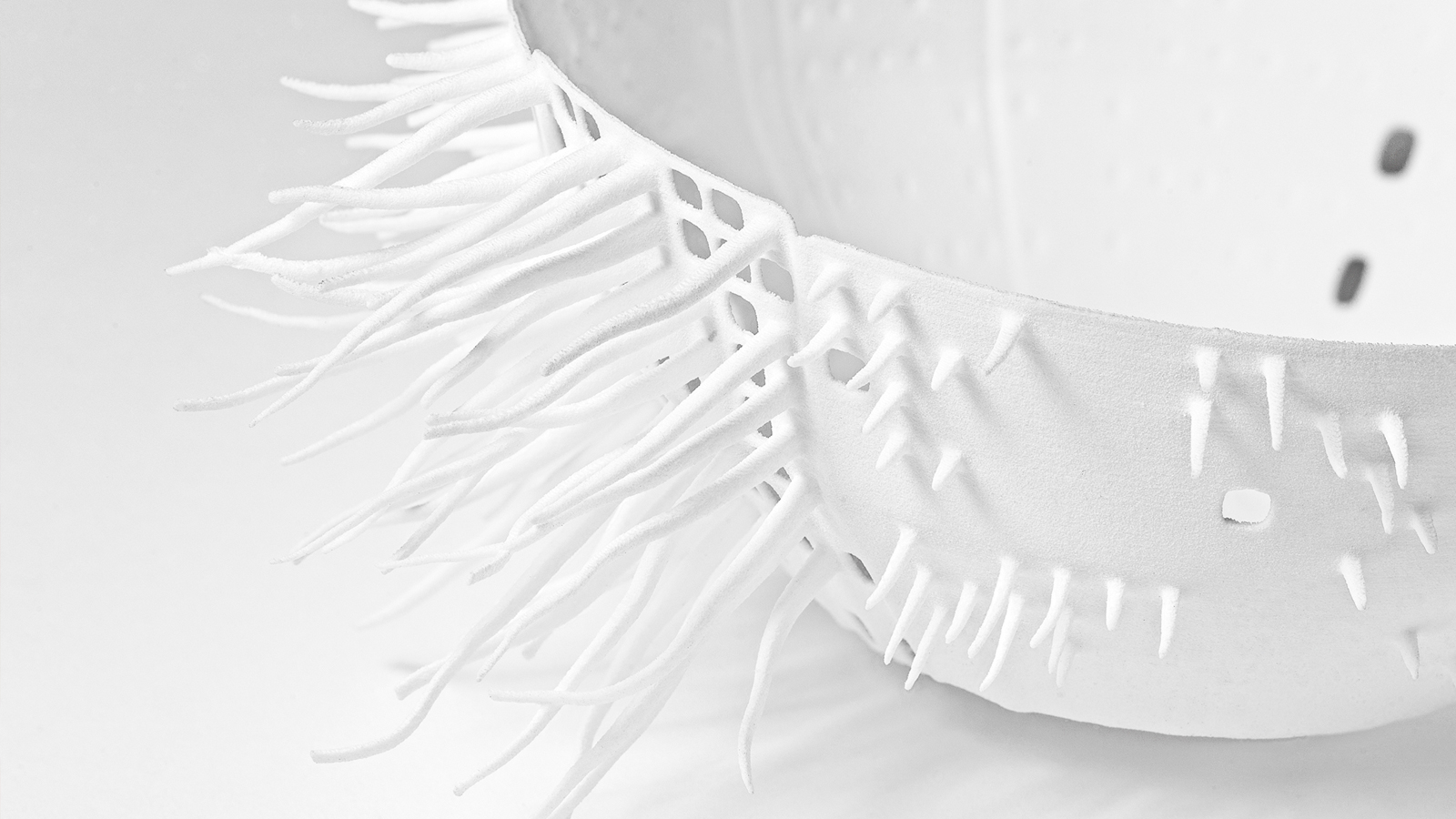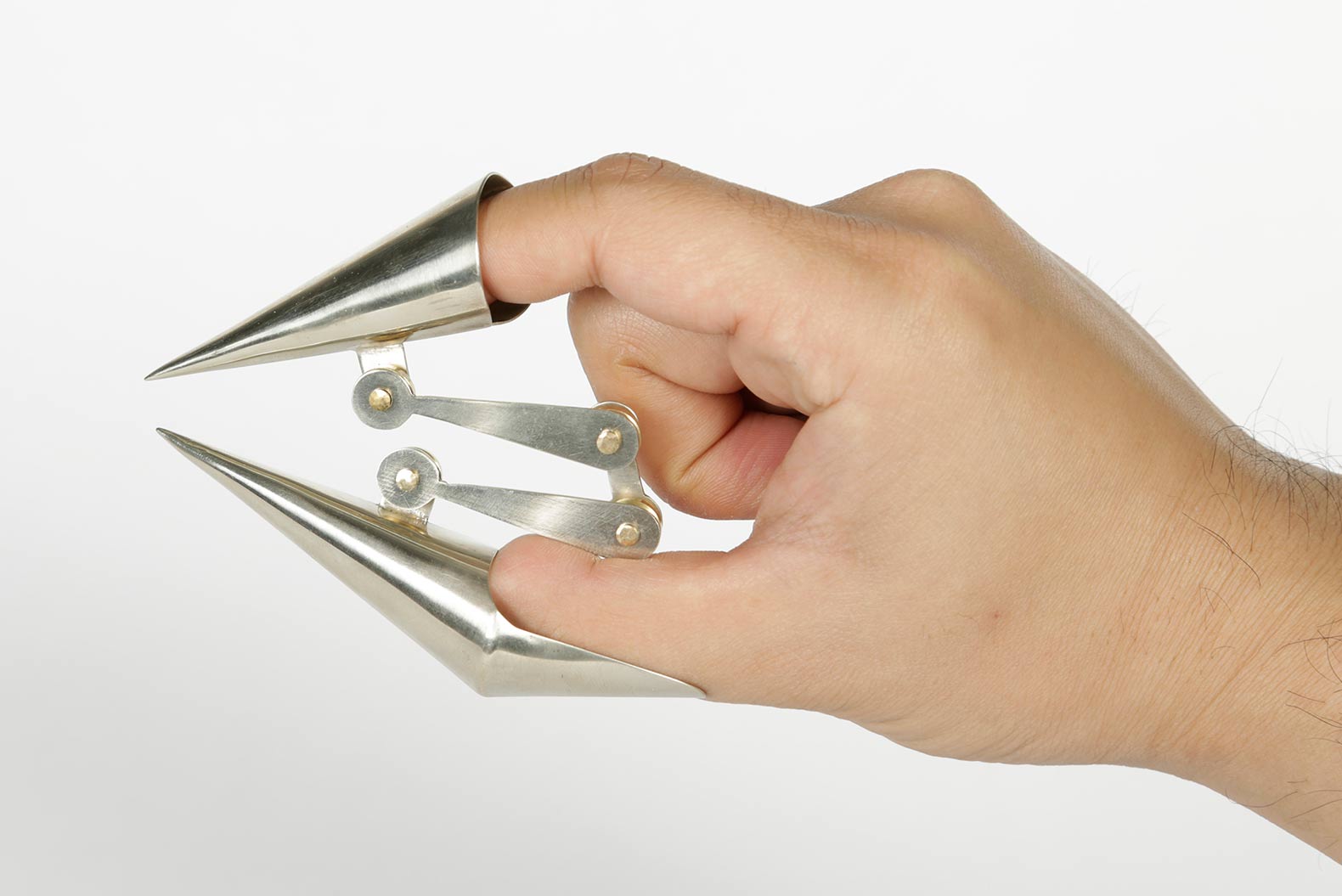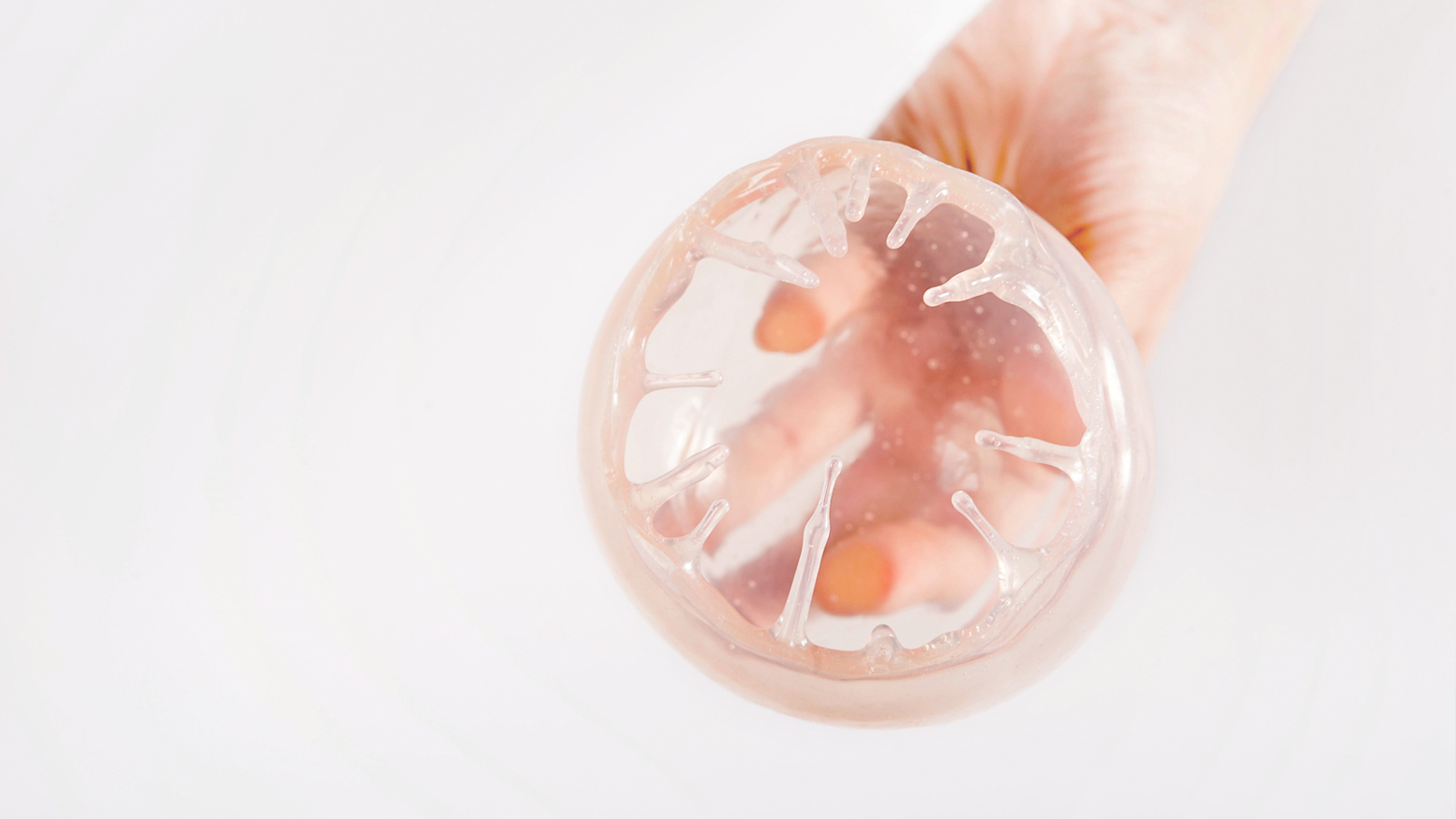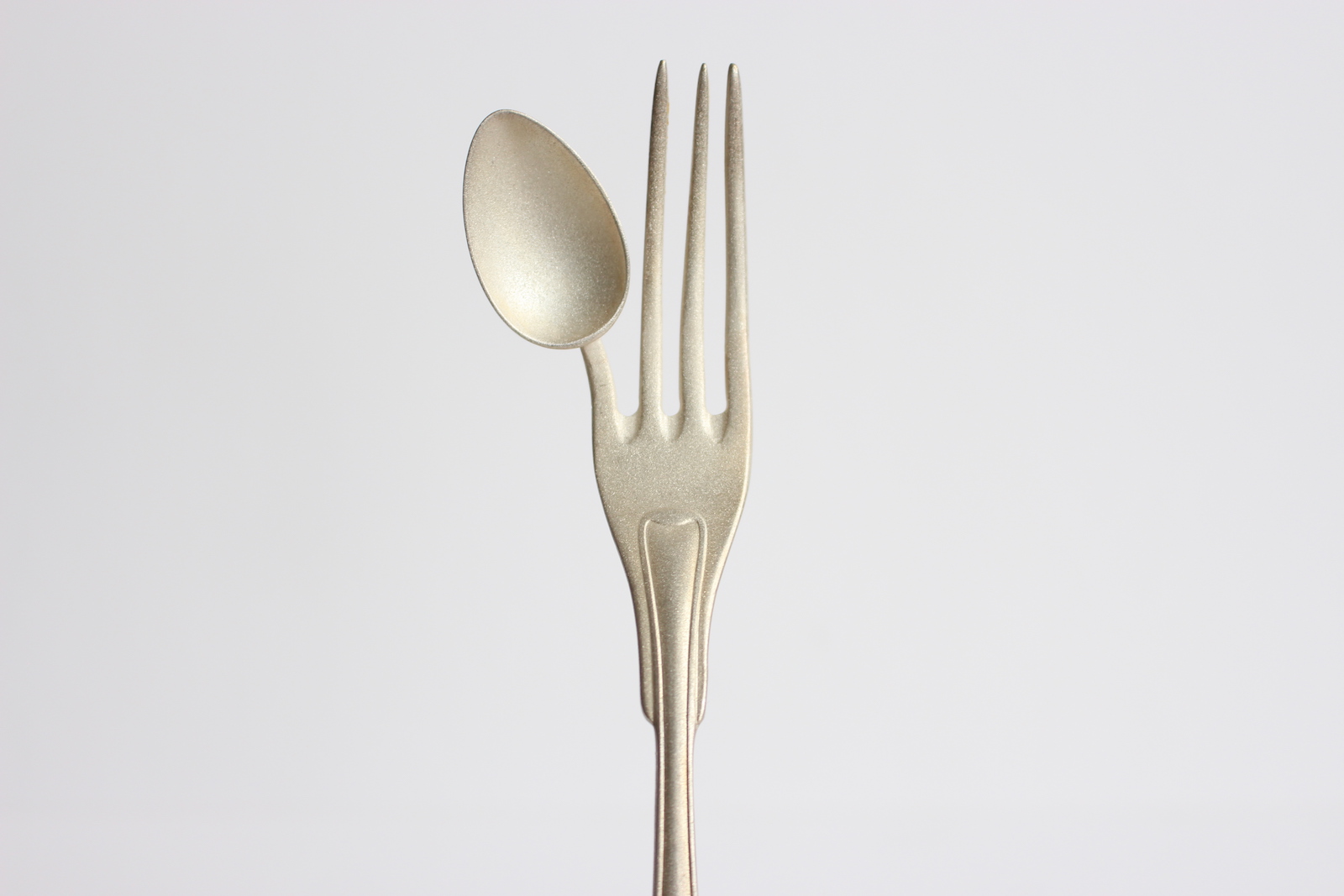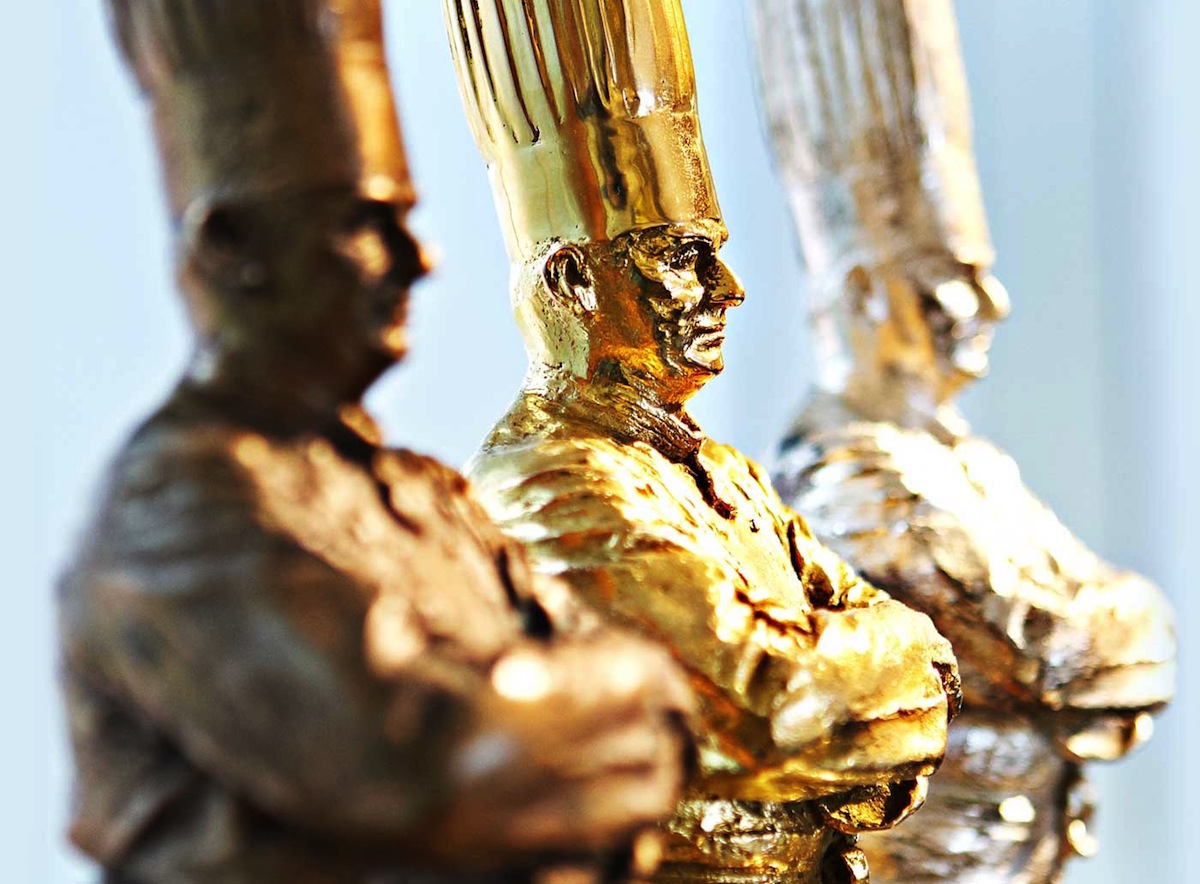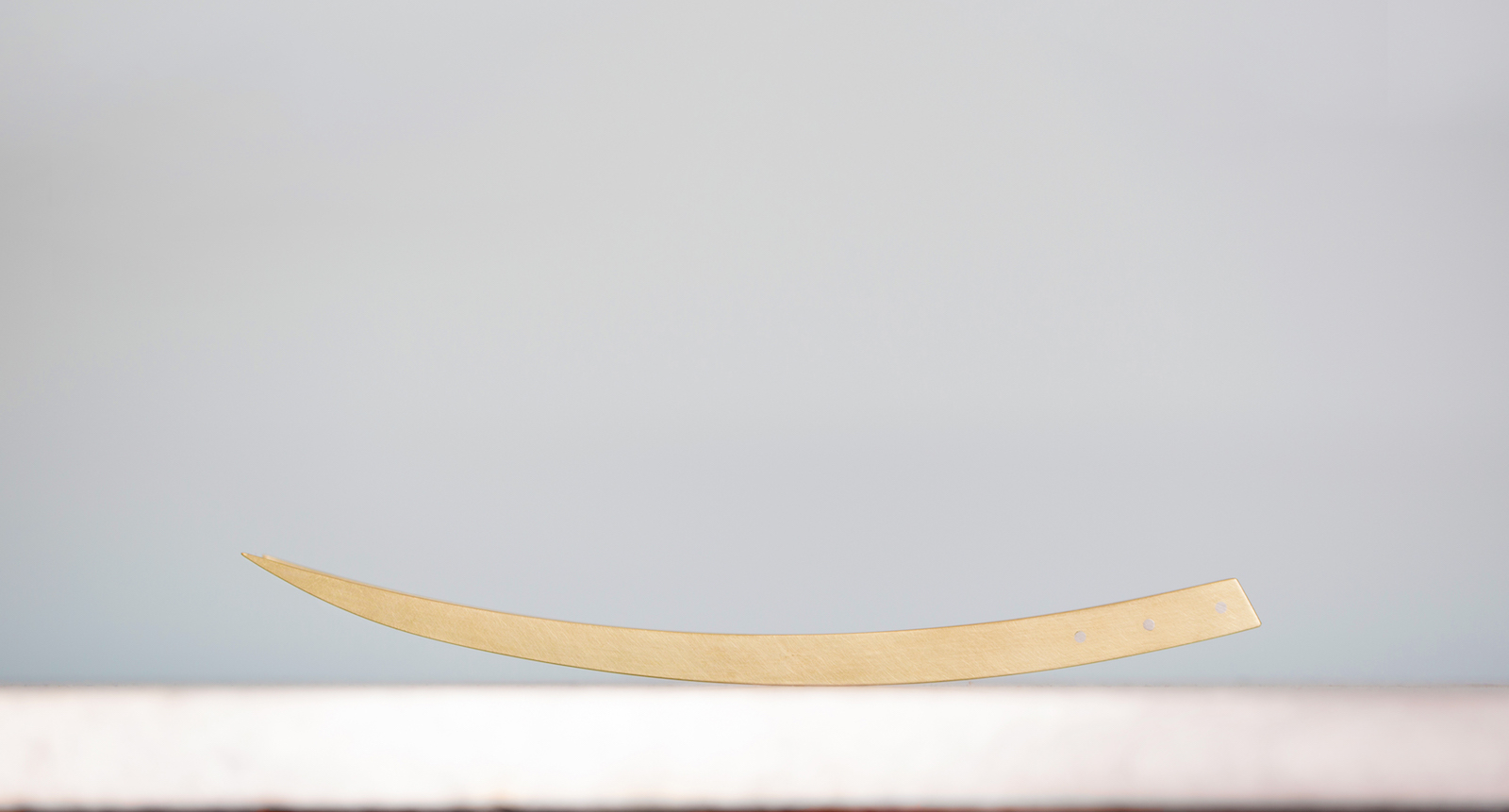This story is part of MOLD Magazine 02: A Seat at the Table, exploring how tableware and furniture can shape new dining rituals. Order your copy of the magazine here.
Licking, sucking, touching, slurping. When did the explicit enjoyment of food become a guilty pleasure; a naughty, rude act? Aren’t the pleasures of food some of the most important of human experiences, contributing both to our physical and psychological wellness? We can’t deny that some of the most delicious food experiences often come from sucking fingers, eating with our bare hands, or licking a cone or even the plate. Social etiquette and table manners, mediated by the utensils we use to interact with food (cutlery and plateware), appear to be taking us away from certain pleasures of eating instead of getting us closer to them.
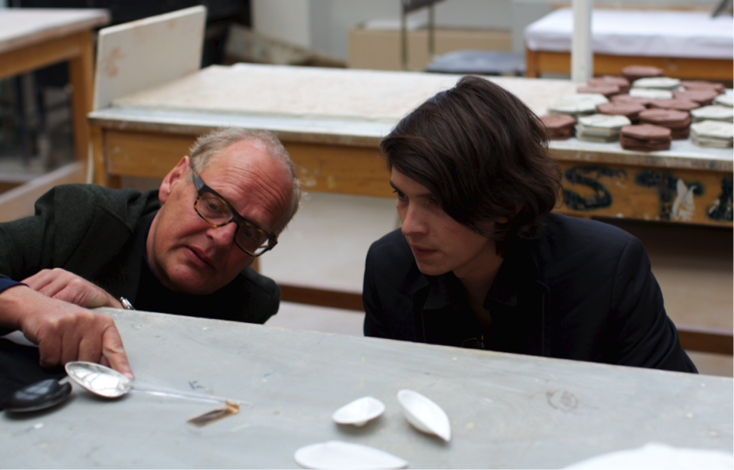 Andreas Fabian and Charles Michel, refining the design of an experimental eating utensil in 2014. Photo: No Water For Whales
Andreas Fabian and Charles Michel, refining the design of an experimental eating utensil in 2014. Photo: No Water For Whales
Andreas Fabian and Charles Michel met through the Crossmodal Research Laboratory at the experimental psychology department of Oxford University. When Fabian asked Michel, “What is the best compliment you’ve ever had for your cooking?” he responded, “When people lick the plate!” Ideas immediately connected and they started creating a series of intuitive eating utensils such as a “Licking plate,” “Hand Bowl,” and “Goûte spoon,” that a year later, were exhibited at the Science Museum in London in an exhibition on Cravings.
Their collaboration aims to remedy the modern-day disconnection to our senses (and food) through the design of unconventional cutlery and plateware. By proposing an alternative for modern tables, touching and even licking food could be made an elegant act. Integrating a tool as part of the sensual experience of food can implicitly heighten our awareness of the beauty of eating, hopefully taking the diner closer to food and its pleasures, rather than away from it.
In this series, the authors will explain the rationale behind their approach to food experience design through innovative eating utensils—Fabian from the angle of design and philosophy, and Michel from multisensory perception and culinary art.
